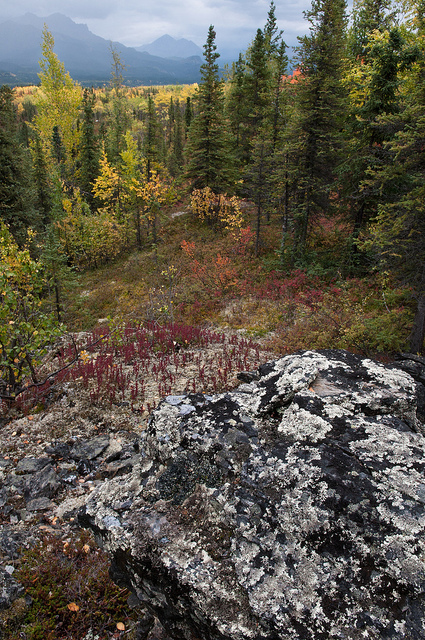White Spruce : Roles in Ecology

a mixture of white and black spruce as well as paper and aspen birch in the Boreal Forest of Denali. (Sandy Brown Jenson, December 29, 2009)
White spruce are main contributors to the Boreal Forest, along with other spruce, birch, aspen, tamarack, and poplar trees. In North America, the Boreal Forest extends from the interior of Alaska and eastward across Canada. It accounts for 1.5 billion acres and makes up a fourth of the surviving intact forests in the world. The ecosystem consists of lakes, rivers, wetlands, forests and tundras in the northern regions. The abundance of trees and size of the forests are helping to manage the Earth’s temperature. They represent a large enough area to impact and counterbalance the effects of climate change.
The Boreal White and Black Spruce Zone covers 10 percent of the total land area in British Columbia, making it one of the largest ecological zone in that province. This zone contains two main ecosystems, upland forests and muskegs, but white spruce are more commonly found in upland forests, so I will focus on this ecosystem. Generally, stands will be a mixture of white spruce and trembling aspen and black spruce and lodgepole pine. The white spruce thrive in the “rich, well-drained river bottoms, which contain the most productive forests of the zone.” (The Ecology of the Boreal White and Black Spruce Zone) In the forests, there are also woodland caribou, wolves, lynx, moose, and black and grizzly bears. There are over 300 species of birds that rely on this ecosystem for nesting and breeding purposes. These vast forests provide homes and safety for many forms of wildlife.
